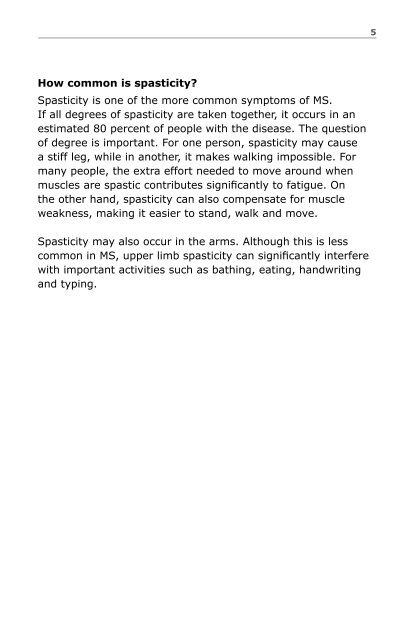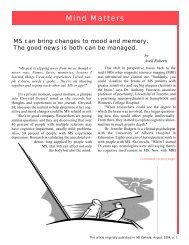Spasticity, Mobility Problems and Multiple Sclerosis
Spasticity, Mobility Problems and Multiple Sclerosis
Spasticity, Mobility Problems and Multiple Sclerosis
You also want an ePaper? Increase the reach of your titles
YUMPU automatically turns print PDFs into web optimized ePapers that Google loves.
how common is spasticity?<br />
<strong>Spasticity</strong> is one of the more common symptoms of MS.<br />
If all degrees of spasticity are taken together, it occurs in an<br />
estimated 80 percent of people with the disease. The question<br />
of degree is important. For one person, spasticity may cause<br />
a stiff leg, while in another, it makes walking impossible. For<br />
many people, the extra effort needed to move around when<br />
muscles are spastic contributes significantly to fatigue. On<br />
the other h<strong>and</strong>, spasticity can also compensate for muscle<br />
weakness, making it easier to st<strong>and</strong>, walk <strong>and</strong> move.<br />
<strong>Spasticity</strong> may also occur in the arms. Although this is less<br />
common in MS, upper limb spasticity can significantly interfere<br />
with important activities such as bathing, eating, h<strong>and</strong>writing<br />
<strong>and</strong> typing.<br />
5

















